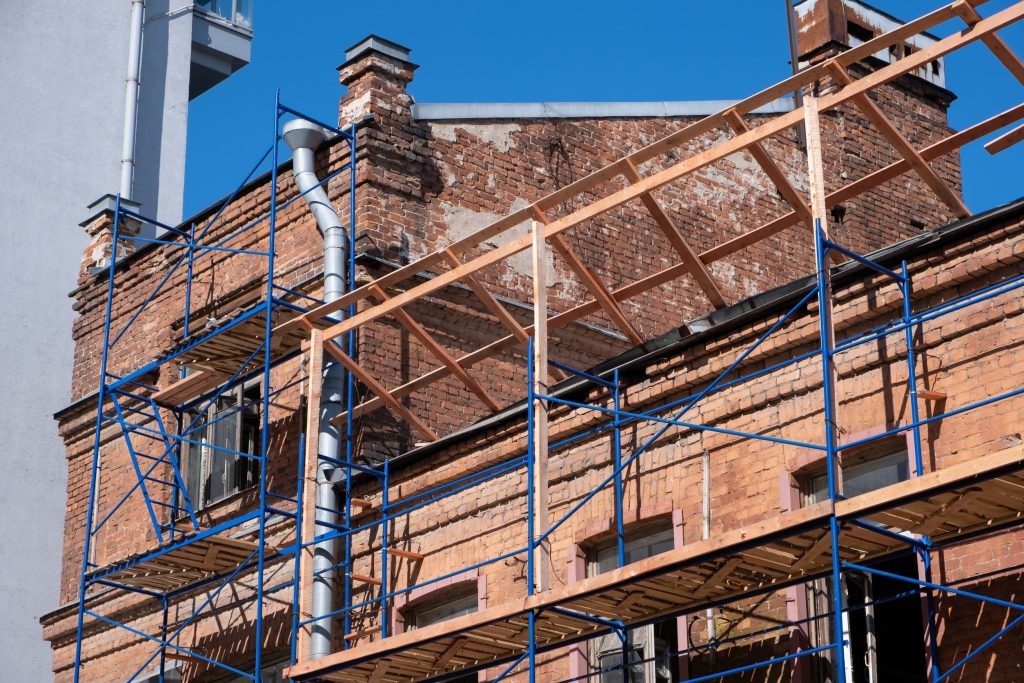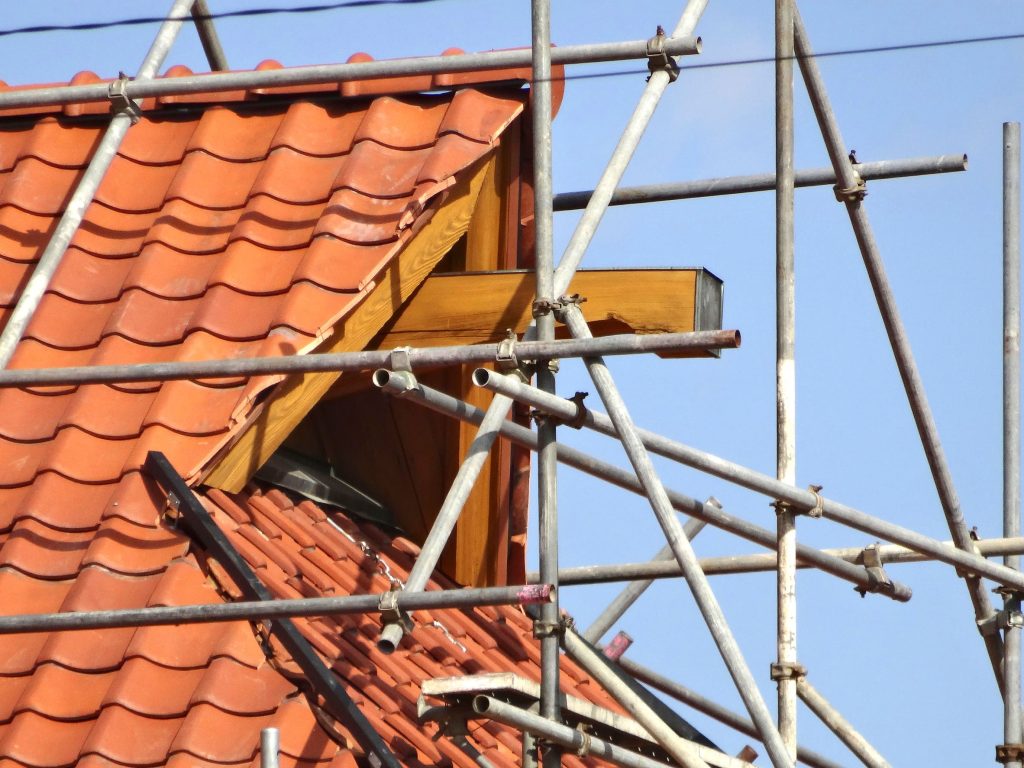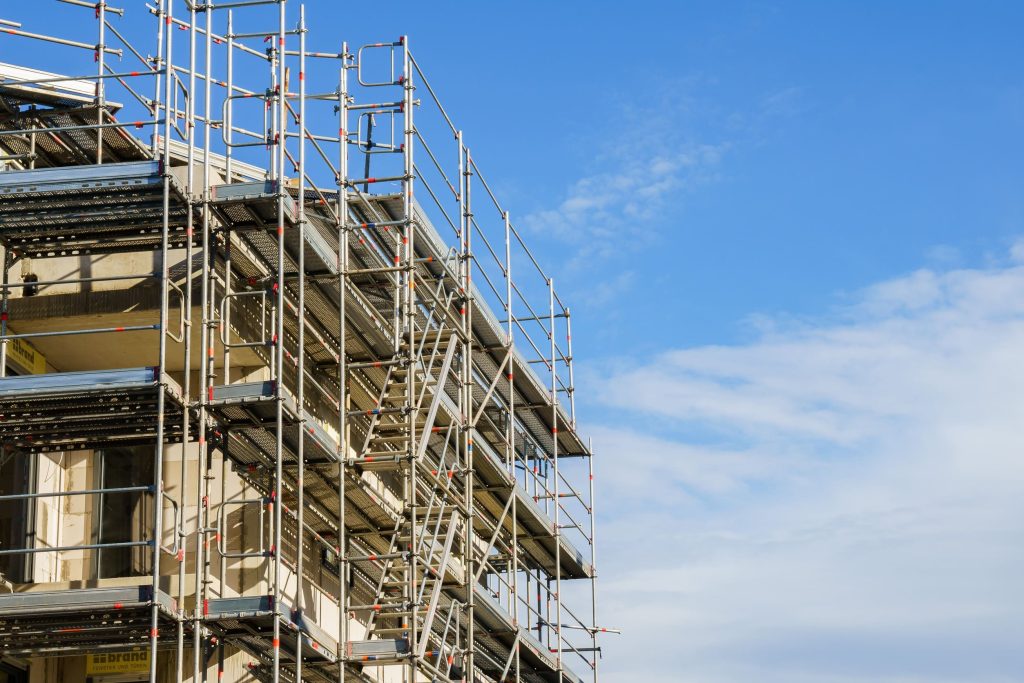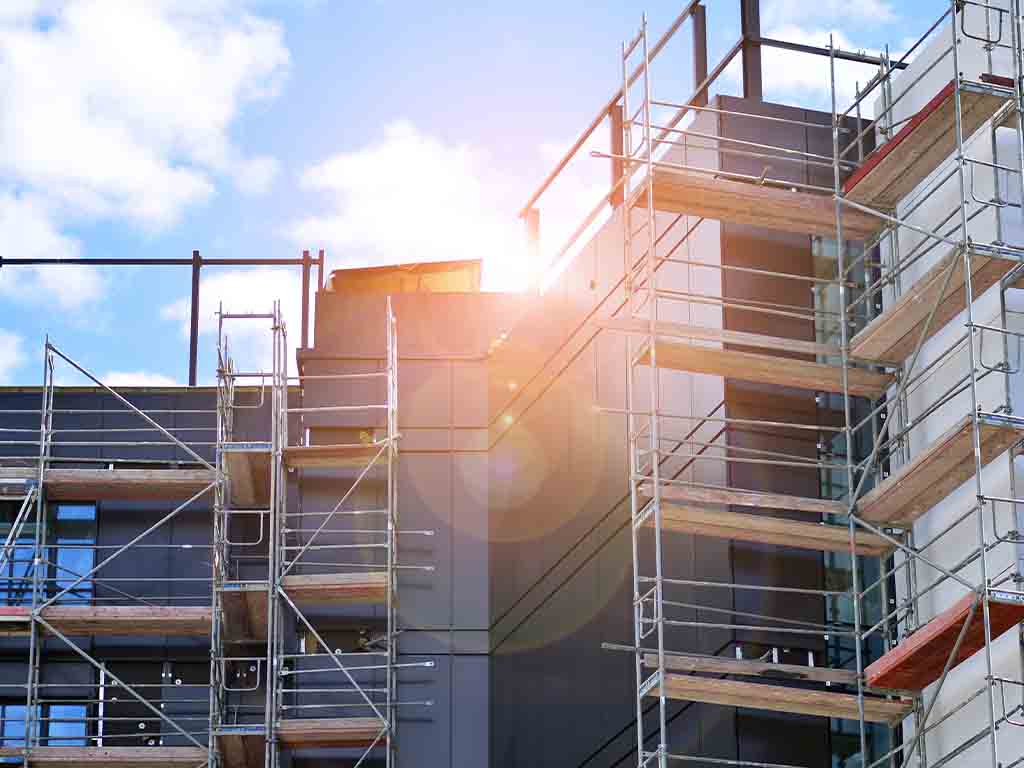When it comes to construction or roofing projects, safety should always be the top priority. Roof work, often involving significant heights and considerable risks, requires careful planning and proper equipment. Among the essential safety measures, scaffolding plays an irreplaceable role. Not only does it ensure worker safety, but it also increases efficiency in completing tasks.
This guide will walk you through the legal and safety requirements for scaffolding on roofs, the risks of neglecting proper precautions, and the best scaffolding solutions for your needs.
If you’re looking to work on a roof, keep reading to ensure your projects comply with regulations while maintaining the safety of your team.
Is it illegal to work on roofs without scaffolding?

Scaffolding is typically mandatory for tasks involving significant risks, such as:
- Working on sloped roofs.
- Projects involving heavy equipment or materials that could fall.
- Jobs requiring more than one worker at a time on the roof.
Are there any exceptions?
For small, low-risk tasks, such as clearing gutters or inspecting damage, alternatives like ladders or harnesses might suffice. However, even in these cases, a risk assessment is required to determine the safest approach.
Understanding the legal and safety requirements

Work at height regulations 2005
Any work carried out at height in the UK is governed by the Work at Height Regulations 2005. These rules mandate that employers and contractors take all reasonable steps to minimise the risks of falls and injuries when people are working above ground level. Under these regulations:
- Scaffolding is often required when working on roofs to ensure worker safety and to prevent accidents involving falling materials.
- A thorough risk assessment must be carried out before beginning the project.
Failure to comply with these laws can result in fines, liabilities, or even legal action.
Why you must comply with safety regulations
Ensuring proper scaffolding isn’t just about legal compliance—it protects lives, property, and reputations. A safe work environment reduces injuries, enhances efficiency, and builds trust with clients and stakeholders.
Risks associated with roof work

Working on a roof without proper precautions can lead to serious consequences.
Here are some of the most common risks involved:
Falling from height
Falls account for a significant percentage of construction-related fatalities. Slippery or unstable surfaces, weak roofing materials, and the lack of fall protection all heighten the risk of accidents. Scaffolding provides a secure platform and reduces this danger.
Example: A roofer working on a steep incline without scaffolding slipped during wet conditions, resulting in severe injuries. A proper scaffolding setup with guardrails could have prevented this tragedy.
Damaged structures
Older buildings or fragile roofs may be structurally weak, increasing the risk of collapse under weight. Proper scaffolding transfers weight away from weaker areas, ensuring the building’s integrity.
Falling objects
Without a stable platform, tools and materials are more likely to fall, putting workers and passers-by at risk. Scaffolding with toe boards and safety edges helps secure loose items.
Electrical hazards
Roof work near electrical installations, such as solar panels or cables, carries the risk of shocks or burns. Scaffolding designed with these hazards in mind provides safe access while reducing risks.
Adverse weather
Unpredictable weather such as strong winds or rain can make working at height even more dangerous. Scaffolding helps stabilise workers and equipment, making it safer to carry out tasks during challenging conditions.
Scaffolding options for roof work

Choosing the right type of scaffolding for your project is critical. Here are some popular scaffolding options for roof work and their benefits:
Fixed scaffolding
Fixed scaffolding is one of the most common solutions for roofing projects. It is securely attached to a building, providing a stable and reliable workspace for workers. This option is ideal for larger projects that require extended periods of roof access.
Chimney scaffold
Chimney scaffolding is designed to allow workers to safely access and work on chimneys, vents, or other elevated areas on a roof. This type of scaffolding usually consists of a single pole with adjustable brackets that can be moved up or down as needed.
Suspended scaffolding
Suspended scaffolding involves hanging platforms from the roof using cables and pulleys. It allows for easy access to different levels of a building and can support heavy loads. However, this solution requires careful installation and regular inspections for safety.
Mobile scaffolding
Mobile scaffolds are portable and flexible, making them an excellent option for smaller roofing repairs or maintenance jobs. They’re equipped with wheels, which allow for easy movement around the worksite.
Birdcage scaffolding
Primarily used for tasks such as ceiling repairs and flat roof work, birdcage scaffolding offers a stable platform and is ideal for projects requiring work on level surfaces.
Prefabricated roof scaffolding systems
These systems are custom-built to suit your specific project. They offer superior safety and reliability, especially for complex or large-scale tasks.
Professional scaffolding services vs. alternatives
While you may consider low cost alternatives like ladders or harnesses, hiring a professional scaffolding company ensures greater safety and compliance with regulations.
Here’s why hiring scaffolders is worth the investment:
- Expert design: Professional scaffolders, like those at B Mat Scaffolding, design customised scaffolding tailored to your project’s needs.
- Enhanced safety: Enjoy peace of mind knowing that the scaffolding is safely installed and inspected.
- Time-saving: Professional teams handle setup and removal, allowing you to focus on the job.
Ensure your safety with professional scaffolding services
Proper scaffolding is non-negotiable for tasks involving work on roofs. Not only does it keep workers safe and help you comply with legal standards, but it also improves productivity and the quality of your work.
Why trust B Mat Scaffolding?
At B Mat Scaffolding, we are experts in professional scaffolding services for construction and roofing projects. Here’s why contractors and roofing professionals prefer our services:
- Customised designs: We provide scaffolding tailored to your needs.
- Safety first: Our setups comply with all legal and safety guidelines.
- Expert advice: Our experienced team offers free consultations to help you choose the right scaffolding system.
- Reliable service: We take pride in delivering efficient, timely, and professional support.
If you have a roofing project or are exploring scaffolding solutions, contact B-Mat Scaffolding today for expert advice, a free quote, and peace of mind.


